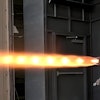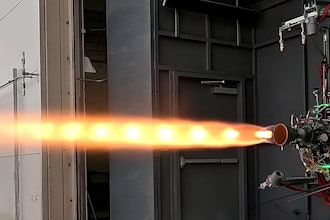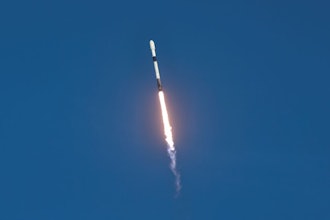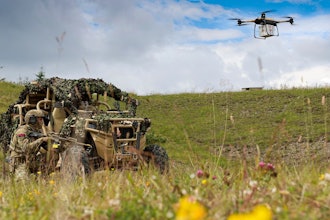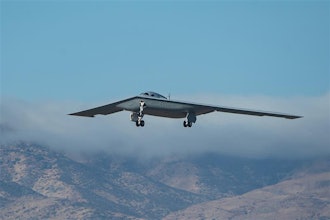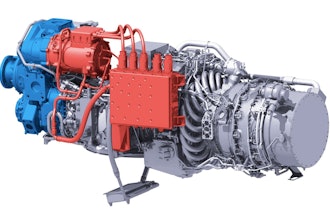
As electric cars and trucks appear increasingly on U.S. highways, it raises the question: When will commercially viable electric vehicles take to the skies? There are a number of ambitious efforts to build electric-powered airplanes, including regional jets and planes that can cover longer distances. Electrification is starting to enable a type of air travel that many have been hoping for, but haven’t seen yet – a flying car.
A key challenge in building electric aircraft involves how much energy can be stored in a given amount of weight of the on-board energy source. Although the best batteries store about 40 times less energy per unit of weight than jet fuel, a greater share of their energy is available to drive motion. Ultimately, for a given weight, jet fuel contains about 14 times more usable energy than a state-of-the-art lithium-ion battery.
That makes batteries relatively heavy for aviation. Airline companies are already worried about weight – imposing fees on luggage in part to limit how much planes have to carry. Road vehicles can handle heavier batteries, but there are similar concerns. Our research group has analyzed the weight-energy tradeoff in electric pickup trucks and tractor-trailer or semi-trucks.
From electric trucks to flying vehicles
We based our research on a very accurate description of the energy required to move the vehicle along with details of the underlying chemical processes involved in Li-ion batteries. We found that an electric semi-truck similar to today’s diesel-powered ones could be designed to travel up to 500 miles on a single charge while being able to carry the cargo of about 93 percent of all freight trips.
Batteries will need to get cheaper before it makes economic sense to begin the process of converting the U.S. trucking fleet to electric power. That seems likely to happen by the early 2020s.
Flying vehicles are a bit further away, because they have different power needs, especially during taking off and landing.
What is an e-VTOL?
Unlike passenger planes, small battery-powered drones that carry personal packages over short distances, while flying below 400 feet, are already coming into use. But carrying people and luggage requires 10 times as much energy – or more.
We looked at how much energy a small battery-powered aircraft capable of vertical takeoff and landing would need. These are typically designed to launch straight up like helicopters, shift to a more efficient airplane mode by rotating their propellers or entire wings during flight, then transition back to helicopter mode for landing. They could be an efficient and economic way to navigate busy urban areas, avoiding clogged roads.
Energy requirements of e-VTOL aircraft
Our research group has built a computer model that calculates the power needed for a single-passenger e-VTOL along the lines of designs that are already under development. One such example is an e-VTOL that weighs 1,000 kilograms, including the passenger.
The longest part of the trip, cruising in airplane mode, needs the least energy per mile. Our sample e-VTOL would need about 400 to 500 watt-hours per mile, around the same amount of energy an electric pickup truck would need – and about twice the energy consumption of an electric passenger sedan.
However, takeoff and landing require much more power. Regardless of how far an e-VTOL travels, our analysis predicts takeoff and landing combined will require between 8,000 and 10,000 watt-hours per trip. This is about half the energy available in most compact electric cars, like a Nissan Leaf.
For an entire flight, with the best batteries available today, we calculated that a single-passenger e-VTOL designed to carry a person 20 miles or less would require about 800 to 900 watt-hours per mile. That’s about half the amount of energy as a semi-truck, which is not very efficient: If you needed to make a quick visit to shop in a nearby town, you wouldn’t hop into the cab of a fully loaded tractor-trailer to get there.
As batteries improve over the next few years, they may be able to pack in about 50 percent more energy for the same battery weight. That would help make e-VTOLS more viable for short- and medium-range trips. But, there are a few more things needed before people can really start using e-VTOLS regularly.
Slide the ‘specific energy’ slider side to side to see how making batteries better can change vehicles’ energy needs. Venkat Viswanathan
It’s not just energy
For ground vehicles, determining the useful range of travel is enough – but not for planes and helicopters. Aircraft designers also need to closely examine the power – or how quickly the stored energy is available. This is important because ramping up to take off in a jet or pushing down against gravity in a helicopter takes much more power than turning the wheels of a car or truck.
Therefore, e-VTOL batteries must be able to discharge at rates roughly 10 times faster than the batteries in electric road vehicles. When batteries discharge more quickly, they get a lot hotter. Just as your laptop fan spins up to full speed when you try to stream a TV show while playing a game and downloading a large file, a vehicle battery pack needs to be cooled down even faster whenever it is asked to produce more power.
Road vehicles’ batteries don’t heat up nearly as much while driving, so they can be cooled by the air passing by or with simple coolants. An e-VTOL taxi, however, would generate an enormous amount of heat on takeoff that would take a long time to cool – and on short trips might not even fully cool down before heating up again on landing. Relative to the battery pack size, for the same distance traveled, the amount of heat generated by an e-VTOL battery during takeoff and landing is far more than electric cars and semi-trucks.
That extra heat will shorten e-VTOL batteries’ useful lives, and possibly make them more susceptible to catching fire. To preserve both reliability and safety, electric aircraft will need specialized cooling systems – which would require more energy and weight.
This is a crucial difference between electric road vehicles and electric aircraft: Designers of trucks and cars don’t have any need to radically improve either their power output or their cooling systems, because that would add cost without helping performance. Only specialized research will find these vital advances for electric aircraft.
Our next research topic will continue to explore ways to improve e-VTOL battery and cooling system requirements to provide enough energy for useful range and enough power for takeoff and landing – all without overheating.
This article is republished from The Conversation under a Creative Commons license. Read the original article here: https://theconversation.com/why-arent-there-electric-airplanes-yet-103955.

